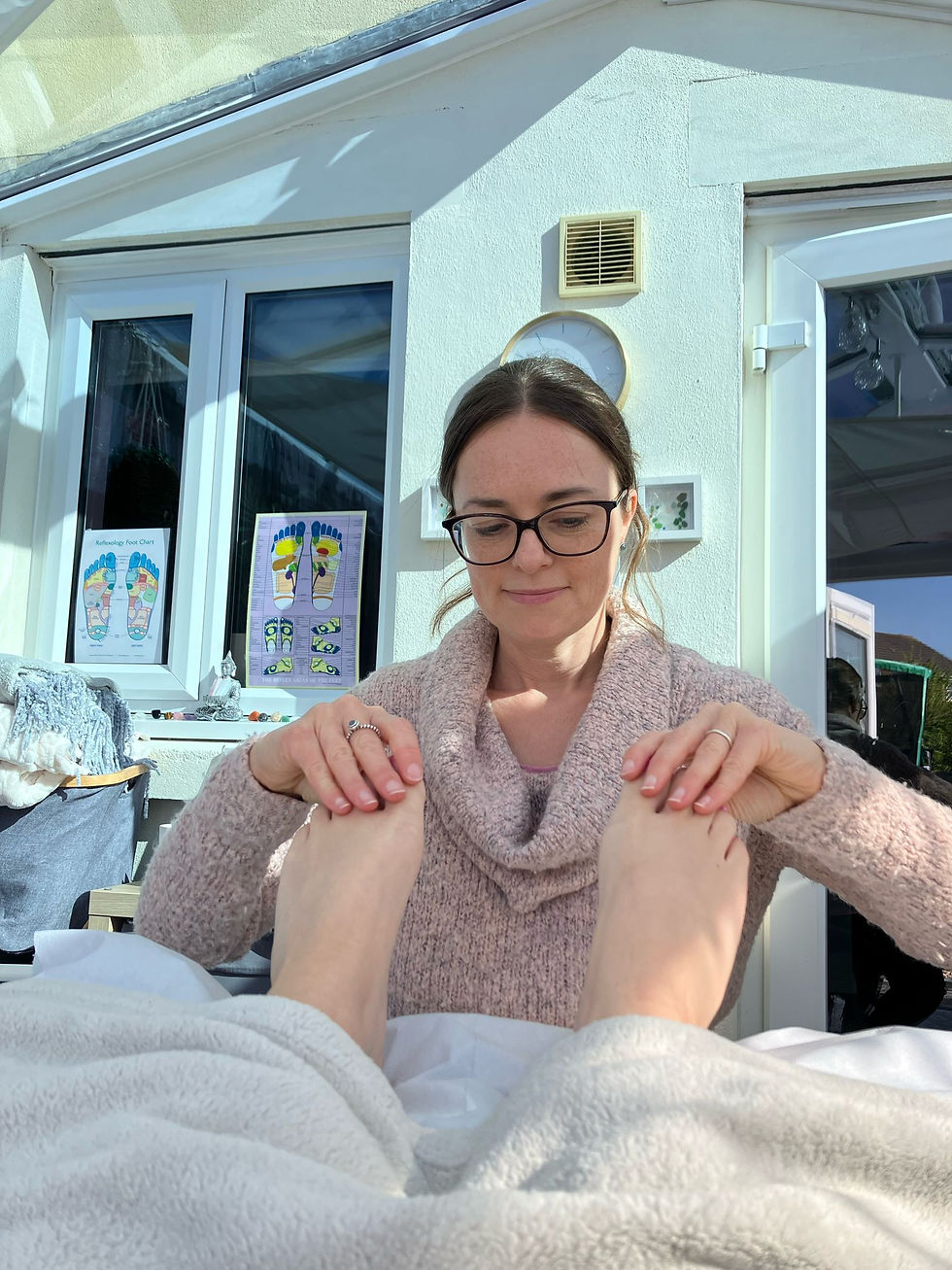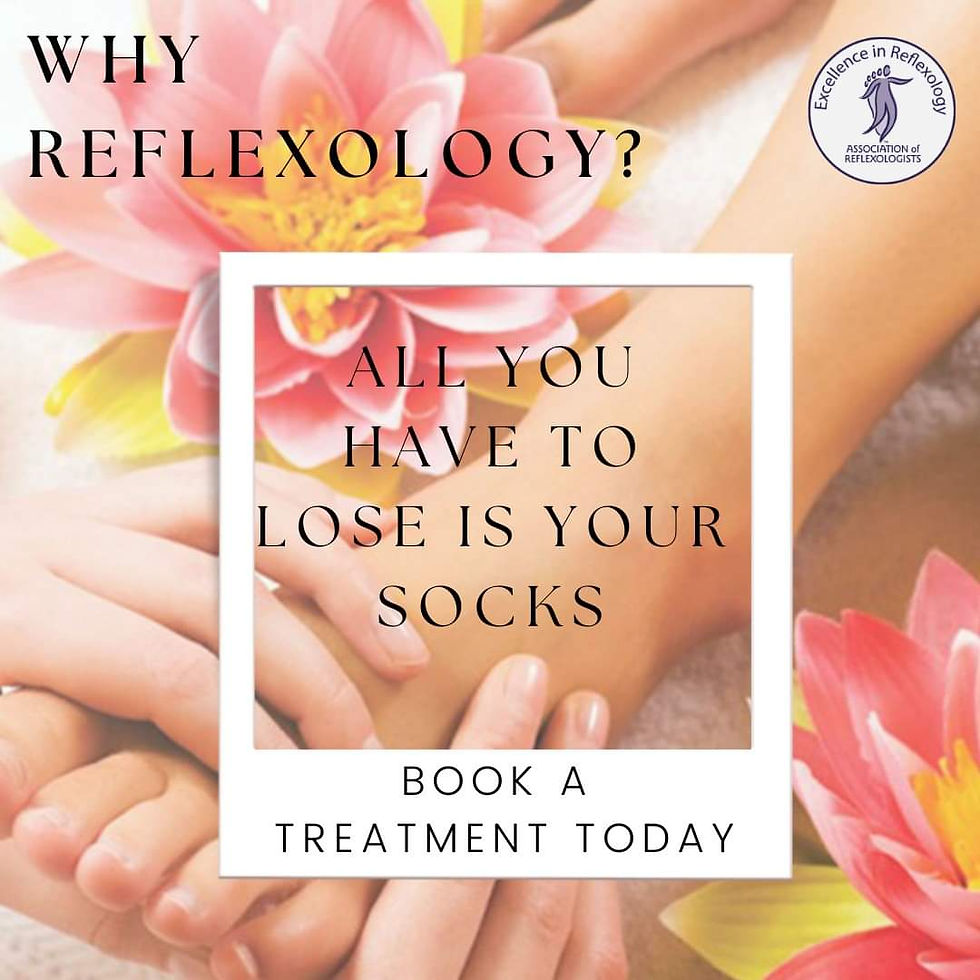top of page











History of Reflexology
The art of Reflexology is an ancient holistic therapy in Egyptian tomb art work showing foot massage. In China with their use of pressure therapies by working the hands and feet to prevent disease and maintain good health. Also, Ayurveda the traditional Indian medicine in which foot massage plays a significant role and dates back to 5000 years. Dr William Fitzgerald 1913 introduced zone therapy to the western world and believed that reflex areas on the hands and feet were linked to areas of the body. Eunice Ingham 1930's an American physiotherapist who further developed zone therapy into what is known today as Reflexology. In 1966 an English nurse Doreen Bayley brought Reflexology to the UK after being trained by Ingham.
What is Reflexology?
Reflexology is a deeply relaxing complimentary therapy suitable for the whole family. It is a non invasive therapy based on the principle that reflexes in the feet, hand and face correspond to different areas of the body. When a stimulus is applied to a reflex point a reaction occurs in the corresponding area, organs, glands, systems and structures within the body. One theory is that good health is based on the uninterrupted flow of energy through out the body. It is believed energy flows through the body in specific channels or pathways. If there is a blockage or congestion in the flow of energy, then the body can be in a state of disease. By using fingers/ thumbs and applying skilled application of pressure to reflex points and zones on the feet and hands to decongest the blockage and encourage smooth flow of energy. This helps encourage the body to promote natural healing and maintain homeostasis. The treatment does not rely on force and as such is a very gentle and safe holistic therapy. Stress is becoming one of the main causes of illness in modern life and can manifest itself in many ways, be it physical, emotional, cognitive, and behavioural. By rebalancing the body, it may help to relieve symptoms of acute or chronic ailments.
Benefits of Reflexology:
Reflexology does not aim to cure, diagnose or prescribe and should not be used as an alternative to seeking medical advice. You are encouraged to tell your health professional you are receiving Reflexology if required. Reflexology acknowledges that everyone is a unique individual, and it is not possible to know in advance how you will react to a treatment. However, people often find it can provide enhanced health and wellbeing for all systems of the body. Reflexology provides support to the whole body with the following benefits:
-
Induces deep relaxation.
-
Improves mood.
-
Reduce stress and tension.
-
Improves sleep.
-
Enhances wellbeing.














bottom of page